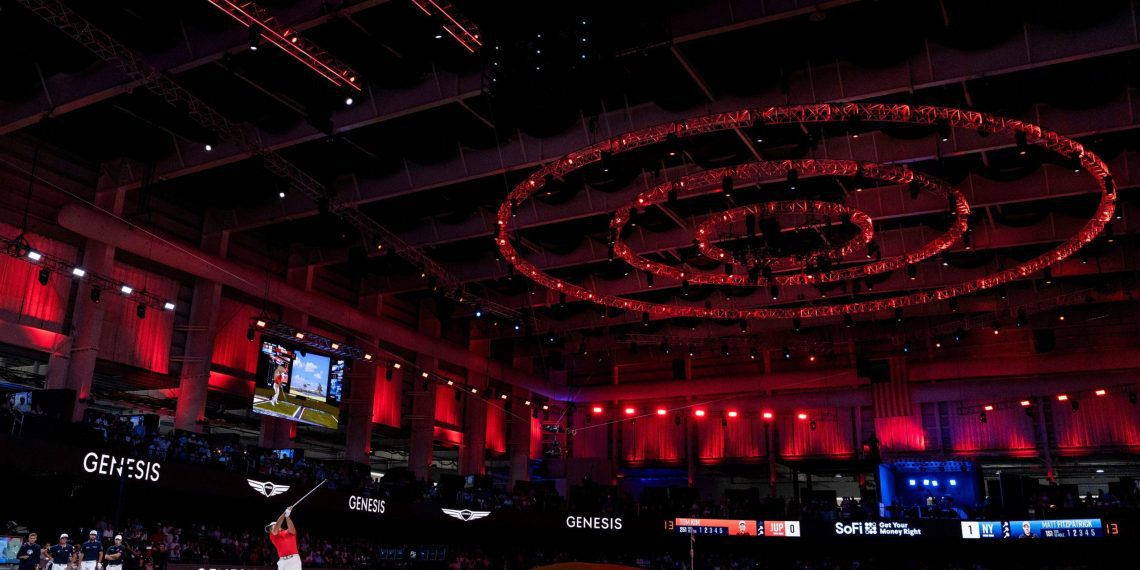The Tiger Woods and Rory McIlroy-backed TGL, golf’s revolutionary tech-driven league, has been making waves in the sports world since its inception in January 2025. What sets this new sports venture apart is its ensemble of superstar PGA Tour players, innovative technology, and prime-time television slots. As the regular season speeds towards its finale, the curiosity surrounding the league’s inaugural playoff format is peaking.
Six teams have been vying for supremacy throughout the regular season, and the playoff picture is crystalizing. The Bay Area Golf Club is currently leading the pack with 6 points and a flawless 3-0-0 record. Close on their heels are Los Angeles GC (5 points), Atlanta Drive GC (4 points), and New York GC (2 points), who occupy the coveted final playoff spot. As we count down to the first TGL playoffs in March 2025, understanding the structure that will determine the inaugural SoFi Cup champion is vital for both casual observers and avid golf enthusiasts.
The TGL playoffs come with a simple yet enticing format. The top four teams from the regular season move to the postseason, with their seeding determined by the points collected throughout the season. Teams earn 2 points for a win (whether in regular or overtime), 1 point for an overtime loss, and no points for a loss in regulation time. In case of identical point totals, tiebreakers are implemented, with the first being the total holes won during the regular season.
The playoffs get underway with single-elimination semifinals on March 17-18, 2025. The No. 1 seed plays against the No. 4 seed, while the No.2 seed competes with the No. 3 seed. The victors from these critical face-offs proceed to the championship round. The TGL Commissioner expressed that they desired a format that rewards regular season excellence and creates thrilling high-stakes moments in the playoffs.
The championship series adopts a distinctive Best-of-Three format—the team that emerges victorious in two matches first lifts the inaugural SoFi Cup. This series, slated for March 24-26, provides multiple chances for dramatic turnarounds and strategic alterations between matches. If a team manages to win the first two matches, the third becomes redundant. Each playoff match adheres to TGL’s standard 15-hole format, broken down into two distinct sessions: nine holes of “Triples” (3-v-3 alternate shot) followed by six holes of “Singles” (head-to-head matchups).
The scoring system remains consistent with the regular season—each hole is valued at one point, and the team with the lower score on a hole wins the point. In the event of a tie, zero points are awarded with no carryovers. Teams can strategically employ their “Hammer” to increase a hole’s worth by one point, with each team having three Hammers per match. If a match is tied after 15 holes, a decisive 3-v-3 closest-to-the-pin competition determines the winner, with the first team to triumph in two such contests claiming victory. While these rules constitute the framework, TGL’s pioneering technology adds another layer to the playoff experience.
The technological advancements that characterize TGL become even more crucial during the playoffs. The enormous simulator screen on which players make their tee and approach shots creates a virtual environment that fuses the accuracy of real golf with the visual spectacle of esports. “What makes our playoff matches unique is how we use this technology to generate pressure moments that test the world’s best players,” a TGL technology expert explained.
The GreenZone—where players complete each hole with actual short-game shots—comprises a rotating turntable and motorized actuators that alter the putting surface between holes. During the playoffs, these mechanisms create particularly challenging green layouts that demand precision under pressure. The 40-second shot clock adds another layer of tension during playoff competition when every second counts, forcing players to trust their instincts rather than overthink crucial shots.
Teams carefully utilize their strategic “Hammer” rule in the playoffs, increasing a hole’s value at optimal moments. Real-time data analytics assist teams in deciding when to use hammers based on historical performance in certain situations, adding a chess-like strategic element to high-stakes matches.
The TGL playoffs are a testament to a bold vision for golf’s future, merging traditional skills with state-of-the-art technology to create a fast-paced, team-oriented spectacle. Fans are witnessing the birth of a new competitive format that could revolutionize how players compete and how audiences engage with golf in the coming years. As the March playoff dates draw near, the suspense rises towards crowning the inaugural SoFi Cup champion. Which team will you be cheering for in the TGL playoffs? Share your thoughts in the comments section below!









